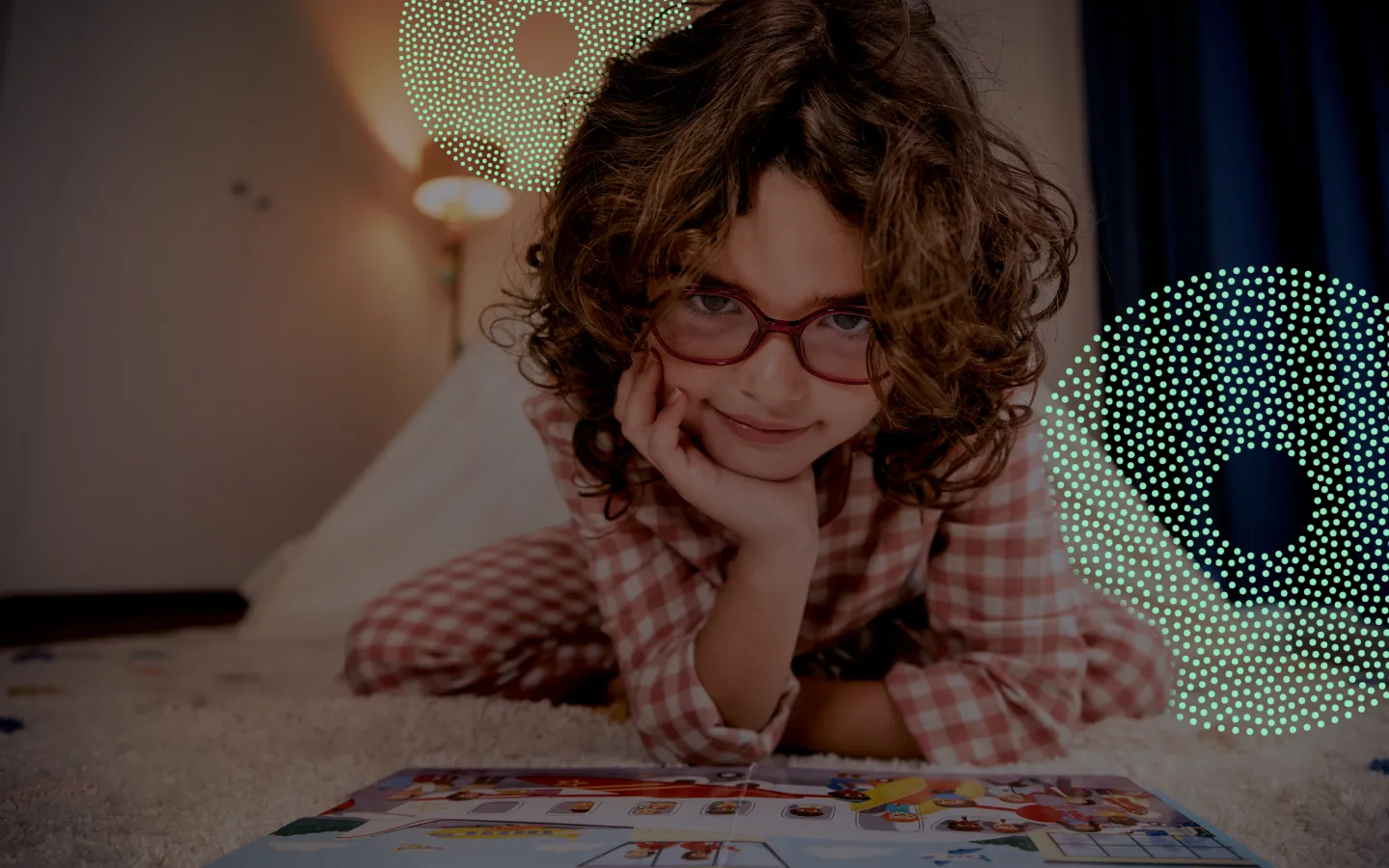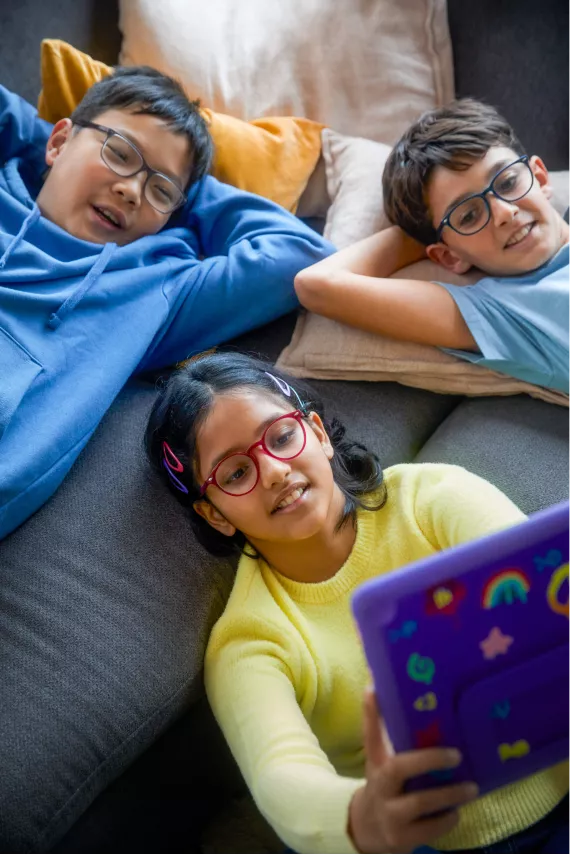Myopia explained
Children are exposed to artificial contrast in the modern visual environment contributing to myopia development.³
- More screen time⁴
- Less outside time⁴
- Intense education⁴

Suitable for children as young as 6 years old, Diffusion Optics Technology™ spectacle lenses are your first step in helping to slow down short-sightedness in your child.⁶*
The younger a child becomes short-sighted, the stronger their glasses may need to be to see clearly as an adult.⁷-⁸
Short-sighted children are also at a much higher risk later in life of serious myopia related eye problems such as retinal detachments and myopic macular degeneration, as well as the lifestyle impact of higher prescriptions.⁹-¹³
Please note that our products are not available for sale or distribution in every country in the world.
Our products are not available for sale in the U.S.
REFERENCES
1. Holden BA, et al. Ophthalmol. 2016;123:1036–42.
2. McCullough SJ, et al. PLOS ONE. 2016;11(1):e0146332.
3. Rappon J, et al. Br J Ophthalmol Epub ahead of print: 01/09/22.
4. Németh J, et al. Eur J Ophthalmol. 2021;31(3):853-883.
5. Zadnick K, et al. JAMA Ophthalmol. 2015;133(6):683–689.
6. SGV data on file 2021. Control of Myopia Using Peripheral Diffusion Lenses: Efficacy and Safety Study, 24-month results (n = 256, 14 North American sites) *Reduction in progression of spherical equivalent refraction and axial length from baseline over 24 months was 47% and 24% on average, respectively (p≤0.0041).

